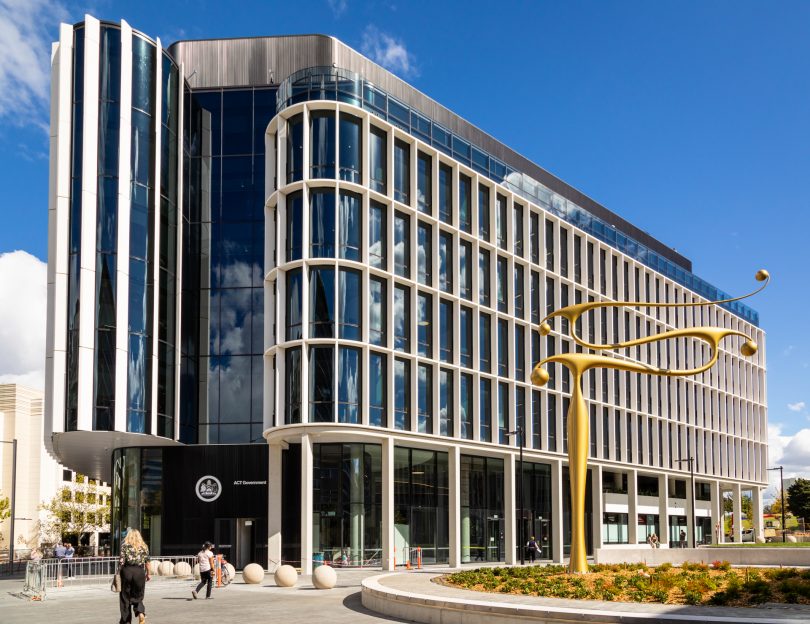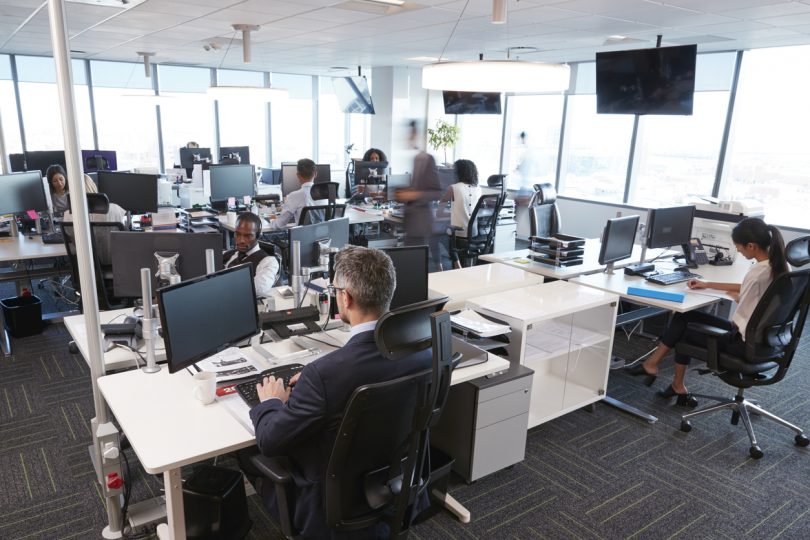
The ACT Government Public Service building in Civic is using the Activity Based Working model. Photo: Michelle Kroll.
I began my working life in the public service in the Brisbane office of the ATO as a teenager chasing tax debts.
It was never to be a lasting relationship, but writing about the new ways government offices are being arranged and managed has brought back a few memories that are in stark contrast to the fluid spaces today’s public servants can inhabit.
The Pavlovian response to the sound of wheels rolling across floors as the trolley ladies made their way into the office and through clusters of desks dispensing cups of tea and biscuits remains as strong as the brew in their urn.
While the trend now is for universal workstations and spaces that need to be booked under the Activity Based Working model, back then, the desk was like home and hearth, and just as secure.
As a kid with so little life under my belt, the newspaper (remember those?) was about the only personal item that adorned it, but others with families and extracurricular activities decorated them with photos and other paraphernalia among the baskets of files (folders with actual paper letters in them) we were expected to work through.
Just like the job, you could depend on returning to the same place to work each day and seeing familiar faces.
Years later, as a sub-editor on various newspapers, I would think about that sometimes as I hunted for a free computer at the start of an evening shift before most of the office shuffled out.
At least today’s public servants will have a digital wayfinder or app to guide them to where they can work or hold a meeting.
Governments are embracing the new office for the efficiencies it brings, especially when some staff will be working from home, something COVID-19 necessitated for many and will continue because of its popularity among workers and the savings to be gleaned if less floor space is required in government buildings.
The ACT’s two new government buildings in Civic and Dickson operate on an 80 per cent capacity, estimating that not all of the 3,000 staff will ever be on-site at any one time.

The new office is meant to be flexible and adaptable. Photo: File.
Just like working from home, there are mixed feelings about this new management approach, suiting some but being a bit unnerving for others, depending on how you may be wired.
I suspect the public service is only at the edge of discovery when it comes to understanding these changes on the workforce and the impacts on productivity or just plain job satisfaction.
The hybrid model of working – home and office – is likely here to stay, so more than likely there just won’t be room in smaller offices for all staff to have a workstation. Still, not everyone will be comfortable, and therefore working optimally, playing the daily game of musical chairs, even if it involves some tech and an app.
Proponents are quick to say the new approach is not just hot-desking but the role human behaviour – especially the need for anchors, stability and predictability – will have in its application. It should be the stuff of PhDs.
It may be that Gen-whatever-it-is-now will simply adapt to the new normal, and those that follow will not know any other way to do business.
But the other potential victim of this impermanent arrangement is a loss of culture and a decay in human relationships, simply from the fact that fewer people turn up for face-to-face meetings and the narrower scope for making connections and friends.
At a time when collaboration is being emphasised, a less collegiate workplace may be the result.
These are matters for team leaders and managers to negotiate, but the public service should monitor the transition closely to assess the benefits and disadvantages of the new system.
Those who have been around long enough know that management trends come and go, and the wheel may turn again in years to come.





















